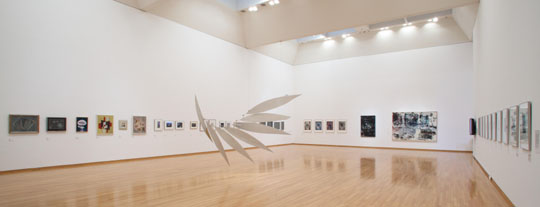Last fall, Tokyo's Museum of Contemporary Art (MOT) quietly launched a series of exhibitions seeking new interpretive approaches to the institution's permanent collection of modern and contemporary art. Tucked away in a modest group of second-floor galleries, the first exhibition in the series, "Chronicle 1945, 1951, 1957: A Revision of Post-War Japanese Art," investigates three momentous dates in Japanese art history as well as the history of the museum's collection.
At a time when severe budget cuts have made permanent collections an afterthought in many museum programs, "Chronicle" suggests that MOT, which experienced a temporary freeze on its acquisitions budget at the start of the past decade, is seeking to reinvigorate this core aspect of its mission.
While recent collection exhibitions at MOT have tended to gather a broad range of works from different periods grouped around a loose theme, "Chronicle" differs in its focus on a specific trajectory of art activity, showcasing the depth of the museum collection. Although MOT was established in 1995, close to 3,000 of its 4,000 works were inherited from Ueno's Tokyo Metropolitan Art Museum, itself a reincarnation of the Tokyo Metropolitan Art Gallery, which was founded in 1926. That connection allowed the curator behind "Chronicle," Aki Fujii, an opportunity to present a selection of works rarely seen in a contemporary context.



















With your current subscription plan you can comment on stories. However, before writing your first comment, please create a display name in the Profile section of your subscriber account page.